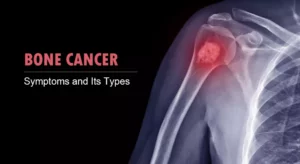Best cancer specialist in Delhi, India Dr. Sajjan Rajpurohit has been a practicing physician for the past 22 years and is currently working as Director in the Medical Oncology department at BLK-Max Super Speciality Hospital, New Delhi. He is also a European Certified as Best Medical Oncologist in Delhi, India, ESMO, Geneva. In this article, he shares with readers some of the most common signs that someone has lung cancer and encourages them to be aware of these warning signs.
What is lung cancer?
What is lung cancer by Dr. Sajjan Rajpurohit?
Lung cancer is a disease that causes cells in the lungs to grow uncontrollably. The main types of lung cancer are small cell lung cancer (SCLC) and non-small cell lung cancer (NSCLC).
Lung cancer is the leading cause of cancer death in both men and women in the United States. Each year, more people die of lung cancer than of any other type of cancer. Cigarette smoking is the main cause of lung cancer.
Symptoms of Lung Cancer

The symptoms of lung cancer by Dr. Sajjan Rajpurohit
The symptoms of lung cancer can take many years to develop. By the time most people are diagnosed with the disease, it has already spread (metastasized) to other parts of the body. This makes treatment more difficult and decreases the chances of a cure.
The most common symptom of lung cancer is a cough that does not go away. Other symptoms include:
1. Shortness of breath
2. Chest pain
3. Wheezing
4. Hoarseness
5. Coughing up blood
6. Losing weight without trying
7. Fatigue
If you have any of these symptoms, it does not necessarily mean you have lung cancer. However, it is important to see your doctor so that he or she can determine the cause of your symptoms and provide proper treatment with lung cancer awareness.
What is a Malignant Tumor?

What is a Malignant Tumor? by Dr. Sajjan Rajpurohit
A malignant tumor is a mass or lump that is formed by the abnormal growth of cells. Malignant tumors can spread to other parts of the body and invade healthy tissue. Lung cancer is caused by the uncontrolled growth of abnormal cells in the lungs.
The Cells In Each Type of Lung Cancer Act Differently

The cells in each type of Lung Cancer act differently Dr. Sajjan Rajpurohit
Lung cancer is the uncontrolled growth of abnormal cells in the lung. There are two main types of lung cancer: small cell lung cancer (SCLC) and non-small cell lung cancer (NSCLC).
SCLC accounts for about 15% of all diagnosed cases of lung cancer. The cells in SCLC grow and divide rapidly, and are less differentiated than NSCLC cells. SCLC is more aggressive and spreads more quickly than NSCLC.
NSCLC is the most common type of lung cancer, accounting for about 85% of all cases. The cells in NSCLC grow and divide more slowly than those in SCLC, and are more differentiated. NSCLC can be divided into three subtypes: adenocarcinoma, squamous cell carcinoma, and large cell carcinoma.
Treatment of Lung Cancer, Surgery, & More
Treatment of Lung Cancer, surgery, & more by Dr. Sajjan Rajpurohit
Lung cancer is one of the most difficult cancers to diagnose and treat. The main reason for this is that lung cancer usually does not cause any symptoms in its early stages. By the time symptoms do develop, cancer has often already spread to other parts of the body.
There are several different types of lung cancer, each with its own set of symptoms and treatment options. The most common type of lung cancer is non-small cell lung cancer (NSCLC), which accounts for about 85 percent of all cases. Small cell lung cancer (SCLC) is less common, but it tends to grow and spread more quickly than NSCLC.
The first step in diagnosing lung cancer is to have a chest X-ray or CT scan to look for suspicious areas. If something suspicious is found, a biopsy may be done to confirm the diagnosis. Once lung cancer has been diagnosed, further tests will be done to determine the stage of the disease.
Surgery is the most common treatment for early-stage lung cancer. The goal of surgery is to remove the entire tumor along with a margin of healthy tissue around it. Surgery may also be used to relieve symptoms in people with advanced lung cancer who are not candidates for other treatments.
Noninvasive Treatment Options For Nonmalignant Tumors
Noninvasive treatment options for nonmalignant tumors Dr. Sajjan Rajpurohit
Lung cancer is one of the most common and deadliest cancers in the world. It is responsible for more than 1.6 million deaths each year, making it the leading cause of cancer death in both men and women. In the United States, lung cancer is the second most common cancer after skin cancer.
There are two main types of lung cancer: non-small cell lung cancer (NSCLC) and small cell lung cancer (SCLC). NSCLC accounts for about 85 percent of all lung cancers, while SCLC makes up the remaining 15 percent.
Although there are many risk factors for developing lung cancer, smoking is by far the most important. In fact, smoking cigarettes is estimated to increase a person’s risk of developing lung cancer by 20 times compared to someone who has never smoked.
Other risk factors for developing lung cancer include exposure to secondhand smoke, radon gas, asbestos, and air pollution. People with a family history of lung cancer or other respiratory diseases are also at an increased risk.
The symptoms of lung cancer can vary depending on the type of lung cancer and the stage of the disease. Common symptoms include coughing, shortness of breath, chest pain, and wheezing. Lung cancer may also cause fatigue, weight loss, and clubbing of the fingers or toes.
If you experience any of these symptoms, it’s important to see your doctor right away so that you can get tested for lung cancer.
Why Is Lung Cancer on The Rise?
Why is lung cancer on the rise? by Dr. Sajjan Rajpurohit
Lung cancer is the leading cause of cancer death in both men and women in the United States. The American Cancer Society estimates that about 228,150 people will be diagnosed with lung cancer this year. Of those, about 85% will die from their disease.
There are a number of reasons why lung cancer rates are on the rise. First, smoking is still the leading cause of lung cancer. Despite decades of public education campaigns warning about the dangers of smoking, nearly 37% of adults in the U.S. still smoke cigarettes.
Second, there has been an increase in the use of other tobacco products such as cigars and hookahs. These products often contain higher levels of nicotine and other harmful chemicals than cigarettes.
Third, exposure to secondhand smoke is also a risk factor for developing lung cancer. Even if you don’t smoke yourself, breathing in secondhand smoke can damage your lungs and increase your risk for lung cancer.
Fourth, air pollution has become an increasingly important risk factor for lung cancer, especially in developing countries where industrialization is rapidly increasing without adequate environmental protections. A recent study found that air pollution was responsible for 22% of all lung cancer deaths worldwide in 2010.
Comparison Between Smoking And Non-Smoking

Comparison between smoking and non-smoking by Dr. Sajjan Rajpurohit
Lung cancer is the leading cause of death in men and women in the United States. Each year, more than 160,000 people die from lung cancer. Cigarette smoking is responsible for about 85% of all lung cancer deaths. The risk of dying from lung cancer is about 23 times higher among men who smoke cigarettes than it is among men who do not smoke. The risk is about 13 times higher among women who smoke cigarettes than it is among women who do not smoke.
People who smoke are also at increased risk for other types of lung cancer, including cancers of the mouth, throat, esophagus, stomach, pancreas, kidney, bladder, and cervix. They are also at increased risk for leukemia and cancers of the larynx (voice box), trachea (windpipe), and bronchus (large airways).
Cigarette smoking is also a major cause of cardiovascular disease, including heart attack and stroke. Smokers are 2 to 4 times as likely as nonsmokers to die from a heart attack. They are also 1½ to 3 times as likely to die from stroke.
Conclusion
Conclusion By Dr. Sajjan Rajpurohit There is no doubt that lung cancer is a deadly disease. However, there is still hope for those who are diagnosed with this condition. With the right treatment and support, many people with lung cancer can go on to lead long and fulfilling lives. We encourage you to talk to Dr. Sajjan Rajpurohit about your options and to never give up hope.




